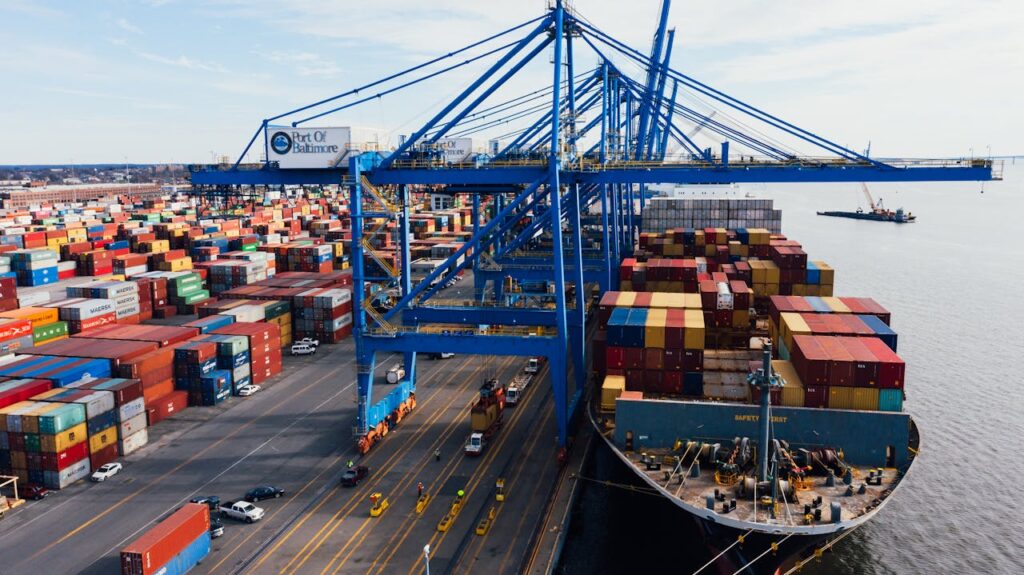
In the intricate world of international trade, FOB (Free on Board) international logistics LCL (Less than Container Load) transportation plays a vital role, serving as a crucial link between sellers and the global market. For numerous enterprises engaged in foreign trade, grasping the details of this process is essential. Let’s now explore its various aspects.
I. Expenses Borne by Sellers under FOB
- Domestic Transportation Costs: This is the initial outlay for goods to commence their international voyage. Sellers are responsible for transporting the products from their factories or warehouses to the designated FOB port terminals or freight stations. Whether opting for trucks speeding along the highways or trains chugging on the tracks, the associated inland transportation expenses, such as fuel costs for trucks, tolls, and railway freight charges, all fall on the shoulders of the sellers.
- Customs Declaration Fees: The export customs declaration procedures are akin to a complex and precise ritual. Sellers, as the key players, must cover a range of related fees. The customs brokerage fee compensates professional customs brokers who possess in-depth knowledge of diverse customs declaration processes, ensuring the seamless passage of goods through customs inspections. The customs declaration form filling fee is for the accurate documentation of goods particulars. Additionally, in case of customs inspections to verify the consistency between the declared details and the actual goods, the inspection fees also have to be shouldered by the sellers.
- Commodity Inspection Fees: When the goods are subject to statutory inspection and quarantine, which is often the case, the commodity inspection process becomes indispensable. Sellers are obliged to pay for the inspection and quarantine fees, which are levied by the authorities to ascertain the quality, safety, and compliance of the goods. In situations where special treatments like fumigation and disinfection are required, the corresponding quarantine treatment fees are an added expense.
- Cargo Packing Fees: Packing the assorted goods neatly into containers demands considerable effort. Manual packing incurs labor costs as workers meticulously arrange the items, and this manual packing fee is borne by the sellers. Moreover, the use of loading equipment such as cranes and forklifts incurs equipment usage fees, which also form part of the sellers’ financial obligations.
- Terminal Handling Charges: Once the goods arrive at the FOB port terminal, they enter the domain of terminal services. THC (Terminal Handling Charge) is a comprehensive levy by the terminal, covering fundamental operations like loading, unloading, and handling of the goods. Miscellaneous port charges encompass a variety of costs, including berth occupation fees, utility charges, etc., all of which need to be settled by the sellers item by item.
- Documentation Fees: The bill of lading, a critical document symbolizing the ownership and transfer of goods, incurs a fee for its issuance, known as the bill of lading fee. During the freight forwarding operations, the freight forwarder company invests significant effort in handling various transport documents and coordinating multiple processes. Sellers are thus required to pay the freight forwarder operation fee as compensation for these services.
II. Strategies to Cut Costs under FOB
- Optimize Cargo Packaging: Packaging is far more than just a covering for the goods; it has a direct bearing on costs. While ensuring the integrity of the products, opting for lightweight and compact packaging materials is a shrewd move. Consider this: for the same volume of goods, using innovative lightweight materials instead of bulky traditional ones can reduce weight and potentially make the packaging more space-efficient. This translates to lower freight charges. For instance, when exporting plastic products, replacing thick wooden crates with high-strength corrugated cardboard can safeguard the items while trimming costs.
- Accurate Calculation of Cargo Weight and Volume: Precision in measurement is crucial as even a slight miscalculation can lead to significant cost implications in freight billing. Before dispatching the goods, it is imperative to use accurate measuring tools to meticulously gauge the length, width, and height of the items and weigh them precisely. Freight forwarders typically calculate charges based on the greater of weight or volume. An inaccurate estimate that erroneously leads to volume-based billing instead of weight-based can quietly inflate costs. When verifying the charging standard with the freight forwarder, it is essential to be as meticulous as proofreading a legal contract.
- Consolidate Shipments: In cases where a business receives a flurry of small orders, it makes economic sense to consolidate them. By pooling together the goods from multiple small orders, a more substantial FOB LCL shipment volume can be achieved. Once this critical mass is reached, freight forwarders are often inclined to offer more favorable pricing. Similar to the concept of wholesale being more cost-effective than retail, this approach can substantially pare down freight expenses.
- Select the Optimal FOB Port: Different FOB ports present varying cost profiles and logistical capabilities. When making this decision, it is necessary to weigh multiple factors. The transportation distance to the port impacts inland shipping costs, with shorter hauls generally being more economical. Additionally, the quality of port facilities matters. Sophisticated and efficient terminals can expedite loading and unloading, reducing the potential for costly cargo delays. After a comprehensive evaluation, choosing a port with lower overall costs can set the stage for a cost-efficient export journey.
III. Packaging and Marking Requirements for Goods under FOB
- Packaging Requirements
- Robustness: Goods in transit are like adventurers facing numerous challenges, and the packaging serves as their protective shield. For fragile items such as glassware, multiple layers of foam and airbags can be employed to cushion against impacts. In the case of precision electronic components, custom-designed shockproof boxes ensure the internal parts remain intact.
- Moisture Resistance: Moisture can be a stealthy adversary, especially for sensitive goods like electronics and food. Employing moisture-proof paper and plastic film in tandem creates an effective barrier, safeguarding the products from humidity-induced damage.
- Appropriate Size and Weight: The dimensions and heft of the packaging need to be carefully considered. It should be ergonomically designed for easy handling by workers, with a recommended maximum weight of 50 kilograms per package. This not only facilitates manual handling but also aligns with the load-bearing limits of most loading and unloading equipment.
- Marking Requirements
- Shipping Marks: These are the identifiers that endow with goods their unique identity in the shipping process. The consignee’s name, destination port, product description, piece count, and contract number must be clearly and durably printed. This enables swift identification and sorting throughout the logistics chain.
- Warning Labels: For goods with hazardous properties such as flammability, explosiveness, or toxicity, mandatory warning labels in accordance with international standards must be prominently affixed. These visual cues alert handlers to exercise extreme caution.
- Handling Instructions: Labels like “Fragile, Handle with Care”, “This Side Up”, and “Keep Dry” provide crucial guidance to those involved in the loading, unloading, and transportation of the goods, ensuring proper care at each stage.
In this complex FOB LCL transportation landscape, a professional and reliable freight forwarder can be a game-changer for sellers. Trustworthiness international logistics has been a stalwart in the international logistics arena for years, boasting an extensive global network. Whether it’s a niche inland port in Europe or a bustling hub in the Americas, we have the connections and expertise to navigate smoothly.
Our seasoned customs and inspection teams are well-versed in the regulations of different nations, guaranteeing hassle-free customs clearance. Our proficient loading operators design optimal container loading plans, balancing stability and space utilization. And our dedicated customer service team is on standby to address any queries. With us, you can expect peace of mind, efficiency, and cost savings.





